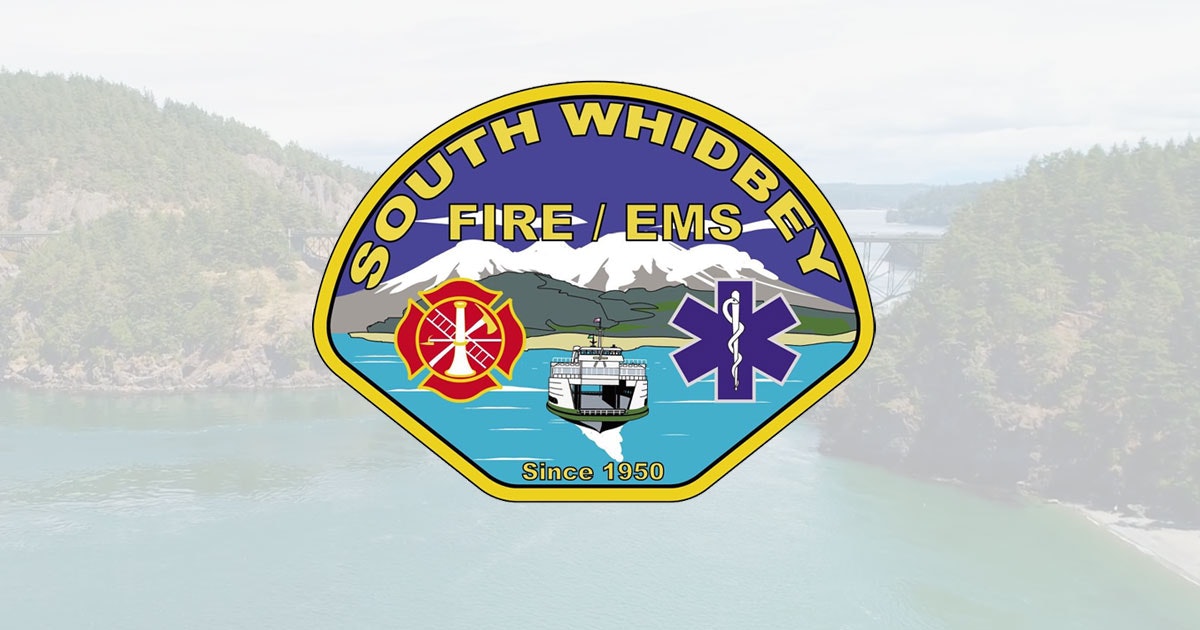SOUTH WHIDBEY FIRE/EMS REDUCES ITS CARBON FOOTPRINT, CONSERVES RESOURCES, Aug 24, 2020

Langley, WA – As concerns about Climate Change increase, South Whidbey Fire/EMS has taken steps to reduce its emissions, conserve energy and protect natural resources on the island. The fire district has been a leader in these areas for over a decade, and wants the community to know the actions it has taken to be a good steward of the environment.
“Reducing emissions and conserving natural resources is important to the health and safety of our community,” said Fire Chief H.L. “Rusty” Palmer. “This definitely falls under fire prevention and life safety from our perspective.”
Ground Water Conservation
All fire districts are required by the National Fire Protection Association to annually test the hoses carried on fire apparatus for fire suppression. South Whidbey Fire/EMS installed new storm drains at its maintenance facility in 2019. This new storm drain system will allow the agency to reclaim nearly all of the water used in testing its fire hoses, saving 20,000 gallons of water per year.
Reducing Emissions
Many fire departments keep engines and other apparatus running at emergency scenes. South Whidbey Fire/EMS has implemented an engine idle shutdown program installed on newer apparatus that support this feature. Voters also recently approved funding to replace older engines that are at the end of their usable lives with new ones that support this feature. All new apparatus will be designed with technology that saves fuel, reduces emissions, idle time and unnecessary engine wear. In addition, all smaller command and response vehicles for the fire district have zero idle technology.
The agency renovated and repurposed an older rescue unit with a new fuel-efficient generator that can power multiple pieces of emergency apparatus and lights on scene. This unit reduces the need for other apparatus to have their engines running to power their lighting equipment during an emergency.
Maintenance staff also refuel and/or top off response apparatus fuel tanks while performing station weekly checks. This eliminates the need for a special trip, saving 2-3 gallons of fuel each time the unit would otherwise have to refuel. It also increases response time readiness by ensuring the fuel tanks are always full.
Energy Conservation
Since 2010, the fire district has worked to improve energy conservation at all of its facilities. It has and continues to install LED lights, fixture upgrades, motion activated light switches, photo cells, wind-up timers, and programmable controlled lighting systems and outlets. These measures have resulted in South Whidbey Fire/EMS being able to cut its electric consumption by half.
Station 36 on Bayview Road was designed to meet the Leadership in Energy and Environmental Design (LEED) Silver energy standards. As part of that plan, the building is wired and plumbed for solar panels, which is included in the fire district’s capital plan for 2021.
The fire district has installed multizone programmable thermostats, energy-efficient heat pumps or ductless heating systems and on-demand water heaters at most stations. Older stations have received upgraded insulation and more efficient furnaces. These steps have reduced its propane consumption by two-thirds since 2010 and allow for a more consistent temperature in the stations throughout the year.
Recycling
South Whidbey Fire/EMS and its employees are committed to recycling and reducing waste. There have been receptacles at all facilities to recycle paper, plastics, cardboard and cans since 2008. Employees are encouraged to bring reusable containers for water and other beverages, and there are bottle refill stations in multiple fire stations.
“The financial support of our community has made these projects possible,” said Chief Palmer. “We are grateful for it, and will continue to look for ways to be good stewards of the environment and your tax dollars.”
###
South Whidbey Fire/EMS provides emergency services to 15,600 people over 66 square miles. The fire district has some full-time and part-time personnel, but relies primarily on volunteers to respond to an average of 2,600 calls a year. The fire district operates under a balanced budget and has a proud history of passing its financial and accountability audits by the state. In 2017, it earned a double-A rating with a leading bond agency because of its sound financial practices.
